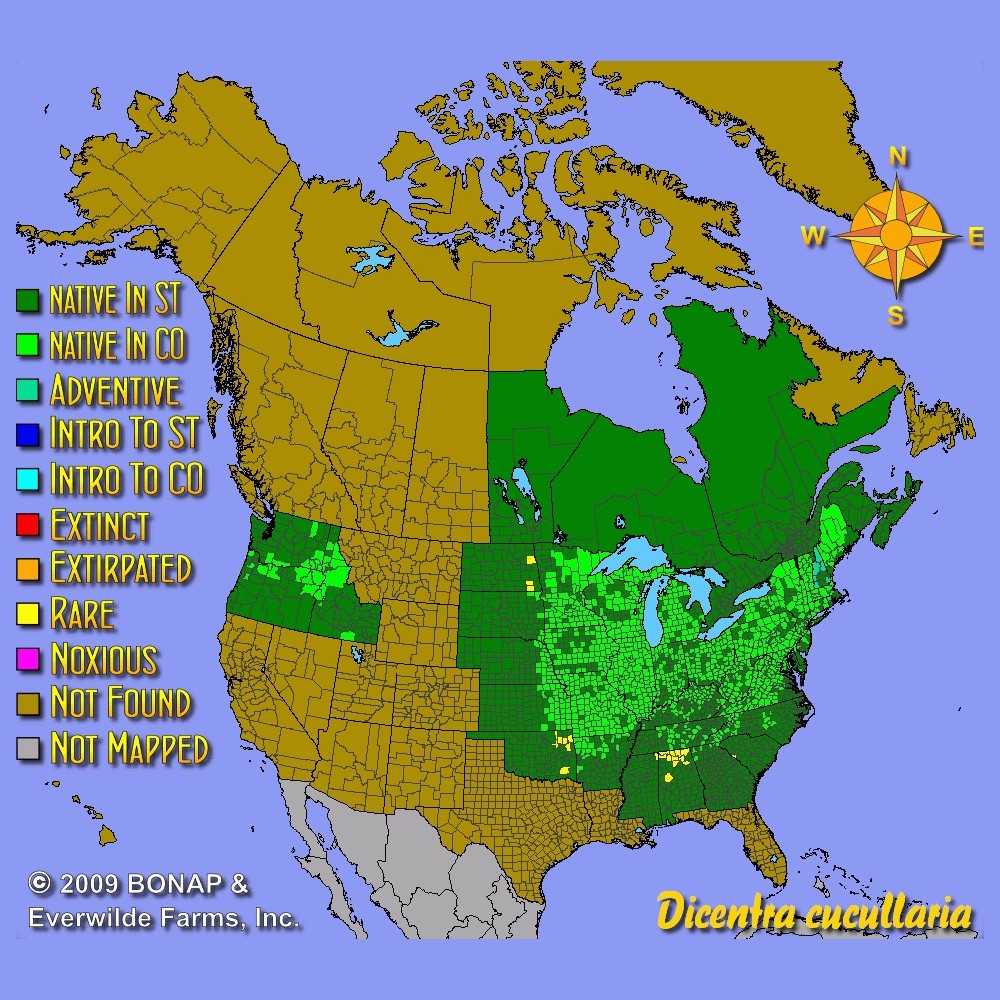Dutchman's Breeches Seeds
- HOW TO GROW
- FAST FACTS
- REVIEWS
HOW TO GROW
Sowing: For the fastest germination, mix the seed with moist sand and store it in a 65 degrees F location for 2 weeks, followed by 6 weeks in the refrigerator. For fall planting, Dutchman's Breeches seeds can be sown outdoors after the first two weeks of warmth; germination should take place in late spring. To start the seed indoors, direct sow the seeds just below the surface of the soil in a flat; keep the soil consistently moist and at a temperature of 65 degrees F until germination, which is naturally slow and unpredictable and may take anywhere from 1-3 months. Seedlings can be grown in individual pots over their first winter and transplanted in the spring after the last frost.
Growing: Keep developing and blooming plants evenly moist, but let the soil dry out after the plant goes dormant in the summer. Wet soil in the winter will cause root damage. This plant will reseed itself in good growing conditions, though it does not become invasive. After several years of growth, the clusters of tubers at the roots can be divided in late fall for new plants. Watch out for slugs and snails, which can cause damage. This plant resists deer.
Harvesting: This plant is mildly toxic to both humans and animals, and can cause skin irritation when handled.
Seed Saving: After blooming, this plant will produce green seedpods that eventually turn papery and brown. Remove Dutchman's Breeches seeds from their pods, and either plant them immediately or store them in the refrigerator until planting.
FAST FACTS
Latin Name: Dicentra cucullaria
Species Origin: US Native Wildflower
Type: Native Wildflowers
Life Cycle: Perennial
USDA Zones: 3, 4, 5, 6, 7, 8
US Regions: Mountain, Midwest, Northern, Northeast, Southeast
Seeds per Ounce: 16,000
Stratification: Warm/Wet for 12 Weeks, then Cold/Wet for 12 Weeks - Repeat
Germination Ease: Stratify 24 Weeks
Sunlight: Shade
Height: 10 Inches
Color: White
Bloom Season: Blooms Early Spring
Great Woodland Find
We have been looking to add some of these spring ephemerals to our woodland. We used to have them, but haven't found them growing wild for a few years now. Looks like the seed is a little tricky to get to germinate, but it should be worth it.
tentative review
Just got seeds today and have stuck 'em in the fridge for now. Will be able to talk about germination rates after I've sown them and seen what they do. Very impressed with how quickly they got here. Wish I could say the same for some of the other seed venders I've bought from.
DESCRIPTION

HOW TO GROW
Sowing: For the fastest germination, mix the seed with moist sand and store it in a 65 degrees F location for 2 weeks, followed by 6 weeks in the refrigerator. For fall planting, Dutchman's Breeches seeds can be sown outdoors after the first two weeks of warmth; germination should take place in late spring. To start the seed indoors, direct sow the seeds just below the surface of the soil in a flat; keep the soil consistently moist and at a temperature of 65 degrees F until germination, which is naturally slow and unpredictable and may take anywhere from 1-3 months. Seedlings can be grown in individual pots over their first winter and transplanted in the spring after the last frost.
Growing: Keep developing and blooming plants evenly moist, but let the soil dry out after the plant goes dormant in the summer. Wet soil in the winter will cause root damage. This plant will reseed itself in good growing conditions, though it does not become invasive. After several years of growth, the clusters of tubers at the roots can be divided in late fall for new plants. Watch out for slugs and snails, which can cause damage. This plant resists deer.
Harvesting: This plant is mildly toxic to both humans and animals, and can cause skin irritation when handled.
Seed Saving: After blooming, this plant will produce green seedpods that eventually turn papery and brown. Remove Dutchman's Breeches seeds from their pods, and either plant them immediately or store them in the refrigerator until planting.
FAST FACTS
Latin Name: Dicentra cucullaria
Species Origin: US Native Wildflower
Type: Native Wildflowers
Life Cycle: Perennial
USDA Zones: 3, 4, 5, 6, 7, 8
US Regions: Mountain, Midwest, Northern, Northeast, Southeast
Seeds per Ounce: 16,000
Stratification: Warm/Wet for 12 Weeks, then Cold/Wet for 12 Weeks - Repeat
Germination Ease: Stratify 24 Weeks
Sunlight: Shade
Height: 10 Inches
Color: White
Bloom Season: Blooms Early Spring
Reviews
Review
Great Woodland Find
We have been looking to add some of these spring ephemerals to our woodland. We used to have them, but haven't found them growing wild for a few years now. Looks like the seed is a little tricky to get to germinate, but it should be worth it.
Review
tentative review
Just got seeds today and have stuck 'em in the fridge for now. Will be able to talk about germination rates after I've sown them and seen what they do. Very impressed with how quickly they got here. Wish I could say the same for some of the other seed venders I've bought from.





